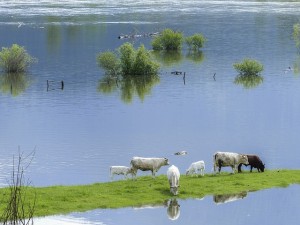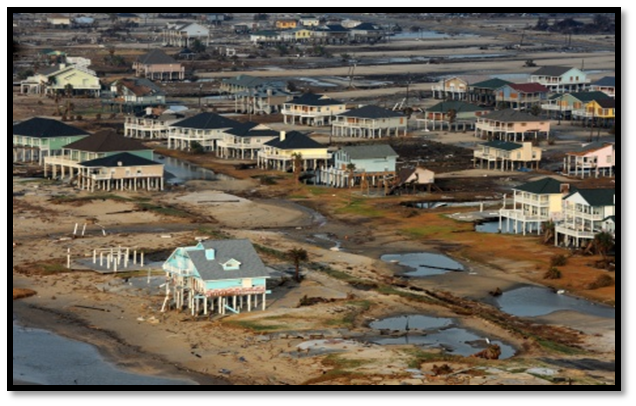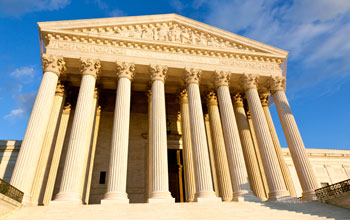By Akiko Shimizu, undergraduate intern
 Both houses of the New York State legislature have passed the Community Risk Reduction and Resiliency Act, but Governor Cuomo has yet to sign the bill into law. The purpose of the bill is to amend certain New York legislation to reflect greater awareness and preparedness for climate change associated risks such as sea level rise and flooding. The bill can be read in full text here [1] on the New York State Assembly’s website.
Both houses of the New York State legislature have passed the Community Risk Reduction and Resiliency Act, but Governor Cuomo has yet to sign the bill into law. The purpose of the bill is to amend certain New York legislation to reflect greater awareness and preparedness for climate change associated risks such as sea level rise and flooding. The bill can be read in full text here [1] on the New York State Assembly’s website.
The bill would amend various sections of the state Environmental Conservation Law, Agriculture and Markets Law, and Public Health Law. Specifically, the bill would require consideration of future climate change risk in the following statutory provisions or subject areas:
- State funding for agricultural land protection (Agric. & Markets § 325);
- Smart growth public infrastructure criteria (ECL Art. 6);
- Petroleum bulk storage requirements (ECL Art. 17, title 10);
- Water pollution revolving loan fund (ECL Art. 17, title 19);
- Oil and gas well permits (ECL Art. 23, title 3);
- Siting of hazardous waste facilities (ECL Art. 27, title 11);
- Bulk storage of hazardous substances (ECL Art. 40);
- Land acquisition for preservation of open space; recreation; and natural, cultural and historic resources (ECL Art. 49, title 2andArt. 54, title 3);
- State assistance for closure of non-hazardous municipal landfills (ECL Art. 54, title 5);
- State assistance for local waterfront revitalization programs and coastal rehabilitation projects (ECL Art. 54 title 11);
- Uniform procedures for major permits (ECL Art. 70); and
- Drinking water revolving fund (Public Health Law Art. 11, Title 4);
In addition, the bill would (1) direct the Department of State to prepare model local laws that include consideration of future physical climate risk and to make such laws available to municipalities; (2) direct the Department of Environmental Conservation to prepare guidance on the implementation of the act, including data and risk analysis tools; and (3) require the Department of Environmental Conservation to adopt regulations establishing science-based state sea level rise projections.
Assemblyman Robert Sweeney sponsored the bill, which in its final form has garnered stronger support than prior versions among New York businesses and environmental groups. This particular draft is the product of several revisions catalyzed by initial opposition from businesses concerned about the costs of measures such as carbon pollution controls. [2] Its fate as of today is not quite secure, as the Governor may be concerned with upsetting businesses and those opposed to the idea of higher project costs. The bill represents one of the first state efforts in the country to incorporate climate change preparedness into official legislation and as such should be treated as an optimistic indicator of growing climate change awareness.
[1] A06558B, 200th Leg., 2d Sess., (2014).
[2] Waldman, Scott. “Legislature Sends Climate Change Bill to Cuomo | Capital New York.” Capital. Robert L. Allbritton, 19 June 2014. Web. 28 July 2014.



